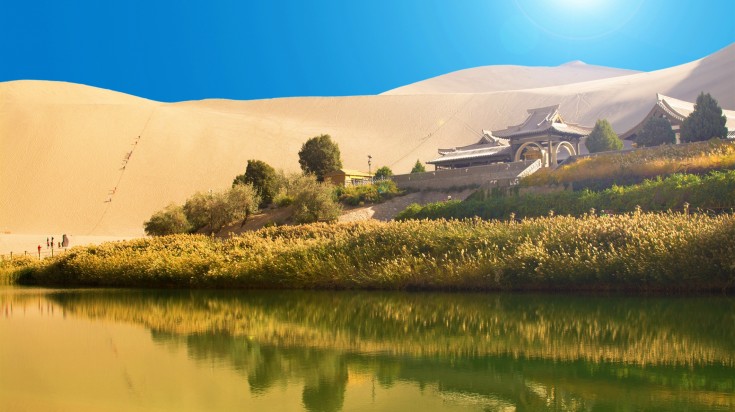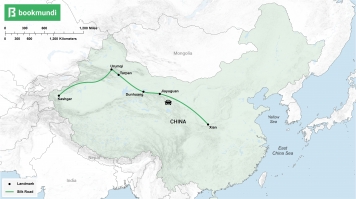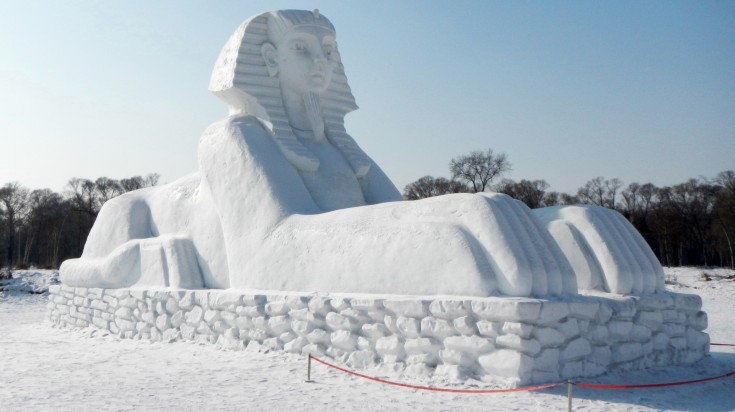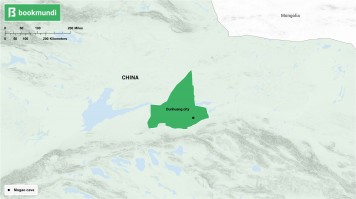Things to Do in China

- CHIN WERNSHIN
- From Malaysia
- CHIN WERNSHIN
- From Malaysia
- CHAN CHINGKEE
- From Malaysia
- Judy
- From
1. Discover history along the Silk Route in China


Stunning architecture, religious shrines and traditional cuisine showcase the extensive cultural exchange between merchants who, long ago, made voyages via the ancient trading route — the Silk Road. The Silk Road has multiple routes that a traveler can choose to visit (the most famous route includes Xian, Jiayuguan, Dunhuang, Turpan, Urumqi and Kashgar); each route of the Silk Road is dotted with magnificent scenery including snow-capped mountaintops, surreal lakes and mysterious stretches of desert. The incredible effort that went into sharing valuable commodities and groundbreaking inventions symbolizes humanity’s connection throughout history.
- When to go: Spring (April – June) is the best time to travel along the Silk Road in China due to favorable weather conditions. Avoid summer (July – August) and winter (December – February) due to extreme temperatures.
- Good to know: Pack any first aid supplies and medications you need before your journey begins as there are no services available on some of the long, desolate stretches of terrain.

Lhasa is the epicenter of Tibetan culture and home to numerous Tibetan Buddhism cultural attractions. This breathtaking capital in the Tibet Autonomous Region is set at an altitude of over 3,600 meters and houses the sacred Potala Palace — the most revered site in Tibetan culture. The nearby Jokhang Temple is another holy site in Lhasa providing tranquility, with dedicated pilgrims praying along its walls while hiking to sanctuaries like the Ganden Monastery and Drepung Monastery provides a unique glimpse into the life of Tibetan monks. You can even take part in the religious traditions yourself by joining the Barkhor kora, the most cherished pilgrimage route in Lhasa.
- When to go: Spring (March – May) and autumn (September – October) are the perfect seasons to visit Lhasa, Tibet due to mild temperatures and clear skies, as well as, to view the gorgeous scenery surrounding the city.
- Good to know: The extreme altitude and sunny skies of Lhasa leave you exposed to UV radiation, so it is crucial to bring sunglasses, lip balm, sunblock and a hat.


Although there are brutal winter temperatures in the province of Heilongjiang, the region also hosts the world’s biggest ice and snow sculpture festival. More than 10 million visitors each year visit Harbin to witness enormous ice sculptures towering nearly 50-meters-high. The winter festival has a magical atmosphere when these life-size sculptures are illuminated, brightening the night sky. Three distinct locations, Zhaolin Park, Ice and Snow World and Sun Island Scenic Area, each offer something unique to the festival. Daytime festival-goers can gaze at the magnificent ice sculptures at Sun Island. Once nightfall arrives, Zhaolin Park and Ice and Snow World put on a dazzling show of illuminated sculptures and lanterns.
- When to go: The annual festival takes place during the harsh winter months (December – February).
- Good to know: Purchase a pair of shoe spikes to avoid slipping and falling in the frigid snow while walking around the festival.
12. Cycle or boat at West Lake, Hangzhou


- Entrance fee: Regular tickets for boat tours cost around USD 6.
Well-known for its beautiful scenery, Hangzhou’s West Lake is a large lake separated into 5 sections and surrounded by green hills and cultural relics. Whether you wish to take photographs of old bridges, hop aboard one of the many tour boats or watch a spectacular fountain show in the evening, there is no shortage of fun activities on West Lake. There is also a nice cycling track that goes around the lake. Bikes are available for rent.
- Good to know: The best time to visit the lake is in springtime when the peach trees near the lake are in full bloom.


- Entrance fees: April – October USD 27 (ticket sales end at 4:30 pm); November – March USD 18. Note that ticket sales end at 4:00 pm.
Also known as the “Caves of a Thousand Buddhas”, the Mogao Caves boast around 600 caves containing over a thousand years of stunning Buddhist art, of which 30 are open to the public. In the early days, the caves were used as a place for meditation. Now, visitors can admire the rare murals, the sculptures of Buddha and the thousands of manuscripts written on the walls. Guided tours are mandatory and enforced in order to preserve the caves.
- Good to know: Travelers can use Dunhuang City as a base to explore the caves. Decent accommodation and dining are offered.


- Entrance fee: March – November: USD 37, December – February: USD 21*
Zhangjiajie National Forest Park is by far one of China’s most beautiful forest parks and also the shooting location of the famed movie Avatar. Covering approximately 479 square kilometers of space, the park is home to several attractions including the Golden Whip Stream, where you can swim in the crystal-clear waters, and the natural platform of Yuanjiajie. The park is an ideal destination for long hikes.
- Good to know: Besides walking, you can use cableways, elevators, buses and mini trains to move around.
